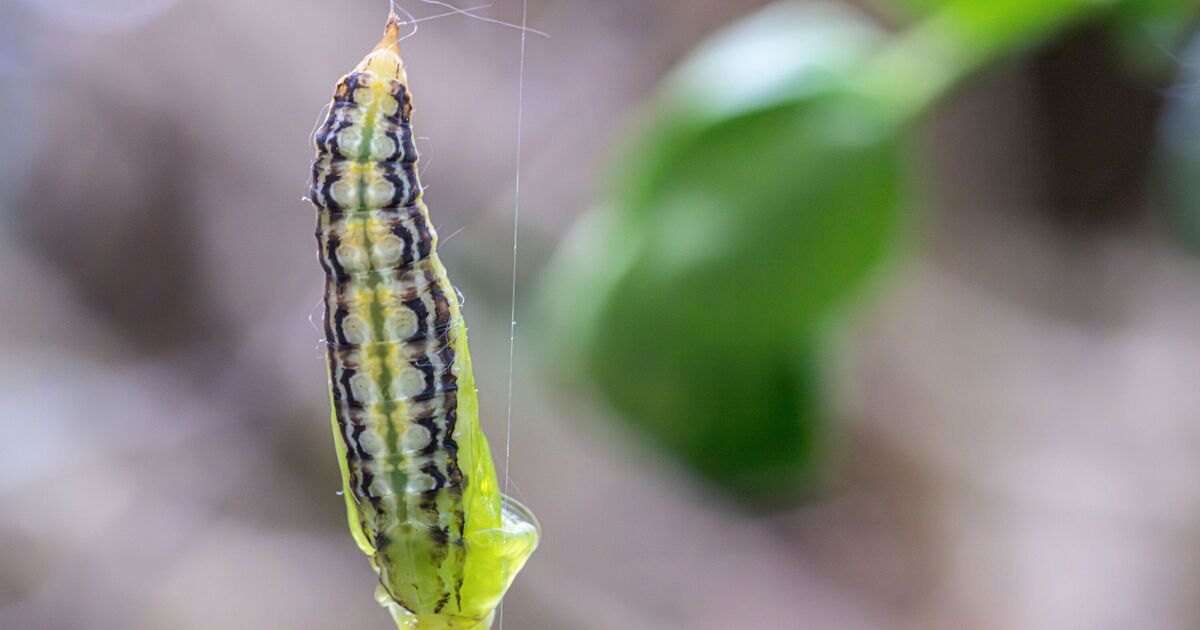Gardeners across the UK are being warned to stay vigilant as an invasive pest continues to spread rapidly, threatening to devastate well-kept hedges. With peak activity hitting in the warmer summer months, experts say now is the critical time to act – before the damage becomes irreversible.
This fast-moving threat targets box plants in particular, which are a popular choice for hedging and structured garden design. If left unchecked, the pest can strip foliage within days, leaving behind brown, lifeless shrubs that are often impossible to recover. According to specialists at Arbtech.co.uk, caterpillars can “strip a healthy plant in no time”, prompting urgent calls for homeowners to inspect their gardens regularly.
How to prevent box tree caterpillar damage:
1. Check box plants weekly for signs of leaf loss or webbing
Box tree caterpillars often start feeding from inside the plant, so damage might not be obvious straight away. Look for chewed leaves, sudden browning, or thinning patches. Webbing in the centre of the plant – often mistaken for spider silk – is a common sign. You may also spot black pellets (droppings) around the base or within the foliage.
2. Look out for green caterpillars with black heads and white stripes
These insects are easy to recognise once you know what to look for. They’re bright green with black heads and thick black and white stripes running down their bodies. Most are around 2-4cm long.
You’ll often find them hidden deep inside the plant, especially on the underside of leaves or in sheltered spots. As numbers grow, they may spread outwards and become more visible. If you spot one, it’s likely there are more nearby. Catching them early is key to avoiding serious damage to your box plants.
3. Remove caterpillars by hand where possible, or using approved treatments
For small infestations, you can remove caterpillars by hand – just make sure to wear gloves. If the problem is more severe, use a biological insecticide that targets the caterpillars without harming bees or other wildlife.
The earlier you treat the problem, the more likely you are to save the plant. Timing is crucial – aim to treat when the caterpillars are actively feeding, typically in late spring and again in late summer.
4. Dispose of affected clippings carefully to avoid spreading the moth
If you prune or remove an infested plant, dispose of the clippings responsibly. Don’t compost them at home, as eggs or larvae could survive and spread. Instead, bag up the waste and take it to a local recycling centre that handles green waste, or follow your council’s guidance.
It’s also a good idea to clean your tools afterwards to prevent spreading the caterpillars or their eggs to healthy plants. Careful disposal plays a big role in limiting the spread of the box tree moth – especially in areas where it’s already established.
5. Avoid unnecessary pruning in peak months
Pruning stimulates new, soft growth – exactly what box tree caterpillars love to eat. To avoid attracting them, try not to prune during peak activity months (usually April to September). If trimming is needed, do it in late autumn or winter when caterpillars are inactive.
Over-pruning in summer not only weakens the plant but also makes it more attractive to egg-laying moths. Keeping your box plants in good shape without excessive cutting will help reduce their vulnerability to infestations – and keep your garden looking healthier for longer.

